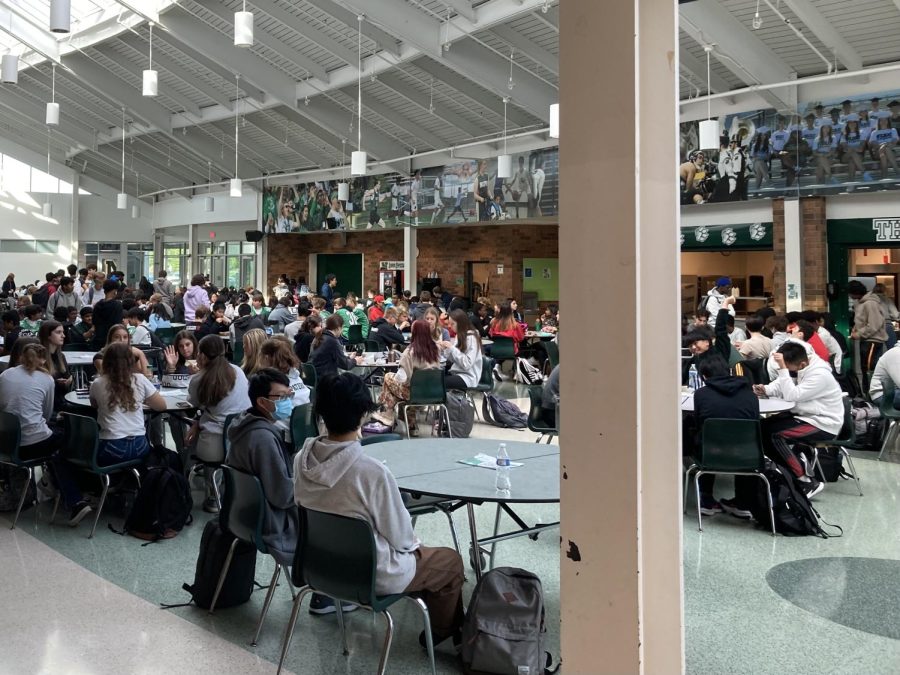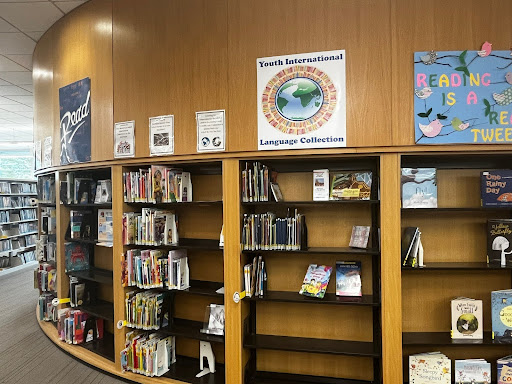Lunch: The Great Equalizer
Nonrenewed lunch funding affects students and staff.
Lunch time! The cafeteria hums with laughter and inside jokes from just under a thousand teenagers filling the room. Classmates mill about, grabbing their pizza, salads, and nachos. Scents float through the air, food that some can’t quite afford.
From 2020-2022, lunches were free for all students through a grant which subsidized the USDA school lunch program. Funding was not renewed for the 2022-2023 school year.
With pandemic relief providing waived lunches for all, students swarmed the cafeteria, racing to be the first in line to avoid missing out on certain foods due to Covid-related supply chain issues. Those who couldn’t make it fast enough risked spending their entire lunch hour in line or scrambling for meager remains.
“What has really hurt us is the Covid supply chain,” Kimberly Sinclair, director of Nutrition and Food Service said. “That has been difficult for us because we order menu items and then they just don’t show up, so then we have to quickly change items. Or we’ll order a certain item and they’ll sub us a different item and then the allergens aren’t the same. So that takes a lot to manage, especially when we have so many buildings across campus.”
This year, the lunchroom has lost a bit of that chaos. According to a voluntary survey of 67 students ranging from sophomores to seniors, 59.7 percent said they felt lunch lines were shorter this year.
While the majority of the student body was previously affected by the clamor of the lunchroom, this year equity seems to be the prevalent issue.
“I think that when we received the waivers there was equity in the cafeteria. Everyone was the same and everyone could choose to eat lunch or bring lunch,” Sinclair said.
Some students are not only being affected by this change financially, but emotionally.
“Where I think it’s hurting us most is that some students who receive free or reduced meals are sometimes embarrassed and they feel differently and I would love to see that stigma go away. Because it’s obviously not fair to a student,” Sinclair said.
“I think it can sometimes crush their spirit, if, you know, someone finds out that they’re free or reduced. And that should never be the case. If everyone was free, then everyone would be the same and no one would have to worry about anything when they come to the lunch line.”
Out of the same survey of 65 students, 36.9 percent say they have seen more people not eating lunches as compared to last year.
Students and families who may be struggling have options to find help. The Free and Reduced Lunch program is available to students who fit the guidelines, which can be found on the Nutrition section of the Novi School District website. Students may also speak with their counselor if they need guidance on how to apply.

Arieis “A” Feldpausch is a senior. This is her third year on staff. In her free time, Arieis enjoys indie folk music (specifically The Mountain Goats),...





